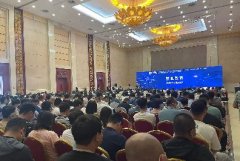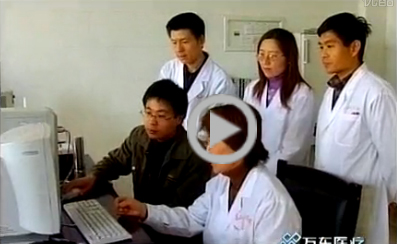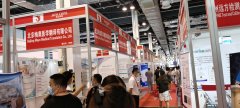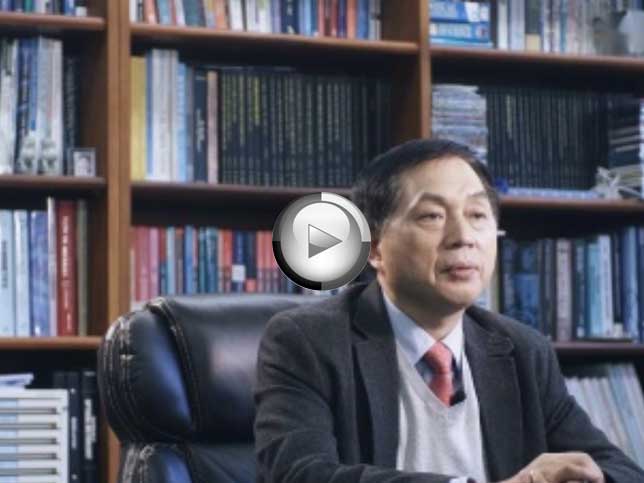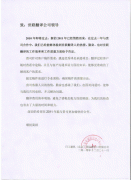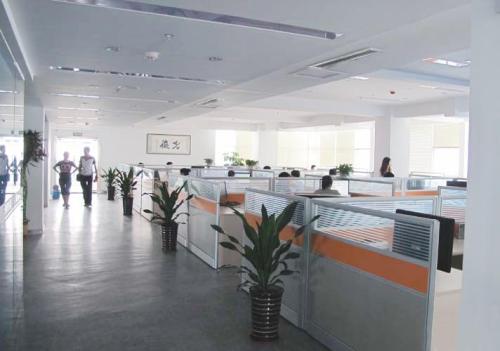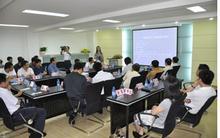上海翻译公司完成工业制造专业领域英文翻译
时间:2018-10-12 09:11 来源:未知 作者:dl 点击:次
上海翻译公司完成工业制造专业领域英文翻译

THERMAL BAKE-OUT OF ALUMINIUM REDUCTION CELLS, A TECHNOLOGY FOR THE FUTURE
Bernd Rolofs and David Eisma CORUS Aluminium Voerde
SchleusenstraJ3e 11, D-46562 Voerde, Germany
Gordon Dickinson and Denis Hunzinger Zedtec Combustion Systems, Inc.
Crossroads Commons, 3901 Washington Road, Suite 203 McMurray, PA. 15317
Thermal bake-out is a well-established method of preheating aluminium reduction cells as it provides better control of the preheating, compared to resistor bake. It enables aluminium producers to significantly improve heat distribution in the cathode by using convection and radiation to preheat the cells. This ensures that the cell lining is thoroughly baked, making cell start-up smoother and faster, and increasing the potential to extend cell life.
Many of the recent advances in reduction cell technology point towards the use of thermal baking as the optimum preheating method. CORUS Voerde are obliged to use thermal bake for cells with coated cathodes but use it as well for normal cells. This paper presents extensive data gathered by CORDS Voerde since first using thermal bake in December 1999 and by Zedtec who have supplied fully automatic preheating systems, which can be used for both Soderberg and prebake cell technologies.
Introduction
Electrical preheating methods rely on the flow of current from the anodes to the cathode, generally through a bed of coke, to preheat reduction cells by means of conductivity and radiation. It is difficult with these methods to control the amount of heat generated and the distribution of heat on the surface of the cathode and through the carbon and insulating refractories. It is also difficult, if not impossible, to preheat the side and end walls properly, which are the locations where a significant number of cell failures tend to occur. The presence of high temperature gradients and unbaked green paste when the cell is being fluxed may lead to thermal shock, cathode block cracking, additional penetration of sodium in the bath and, consequently, a reduced service life of the cell.
By using combustion to preheat reduction cells, the amount of heat released into the pot can be accurately controlled to follow a predetermined cycle to suit pot size and lining as well as individual plant practices. By raising the anodes and insulating the pot to form a combustion chamber, heat is contained and applied, by means of convection and radiation, to those critical areas, which need to be thoroughly baked. The use of high velocity burners promotes good temperature uniformity inside the chamber, and the ability to contain heat inside this slightly pressurized chamber ensures that heat soaks through the cathode. This paper presents the combustion technology that Corus have been using since December 1999, the operating sequence and the positive results obtained by Corus in terms of improved temperature uniformity and reduced temperature gradients through the cathode.
Description of the cell preheating system
Corus Aluminium Voerde are now operating a two burner, natural gas fired, fully automatic combustion system to preheat their 9 m long x 4 m wide prebake reduction cells. From its first application at a UK smelter in the mid 1970's, the Zedtec fuel bake out system was developed into a fully automatic combustion system with flame supervision in 1990. The system is compact and consists of two trailers: a control trailer, which stays in the potroom for the duration of the preheating cycle (Fig. 1) and a utility cart, which stores the two burners, a complete spare burner, the hoses and the control thermocouples and which can be removed once the system is in operation. This particular preheating system operates on natural gas but LPG or oil fired systems are also available.
Figure 1: The compact control trailer stays in the potroom for the duration of the preheating period.
Both trailers have been constructed to be non-conductive by using glass fibre structures, foam filled pneumatic tyres, non conductive rubber hose breaks in the manifold piping and non conductive hoses for compressed air and gas supplies, so as to remove any possibility of grounding through the carts.
In terms of combustion safety, the equipment has been designed and components have been selected to meet European Standard EN746: Industrial thermoprocessing equipment, Part 2: Safety requirements for combustion and fuel handling systems. It can also be designed to meet NFPA, FM or CSA approval. As part of
its safety requirements, the system performs safe starts, controlled shutdowns and continuous flame supervision.
Both trailers have been designed for easy movement through the potline area. Lightweight burners and hoses fitted with quick release couplings ensure fast and easy setup and tear-down. The burners are fitted with inspirators to generate the combustion air by using the plant's compressed air supply, thus eliminating the need for a separate fan.
Control instrumentation includes a Groupe Schneider Modicon PLC linked to a user-friendly Magelis 邯 11 (Human Machine Interface) from which the system is operated. The system is programmed to follow a predetermined safe start sequence which can be viewed on the 印 VII screen. Alarms are also indicated on the screen to assist in fault finding. The heat-up cycle is programmed via the HM:I screen and can be defined in terms of ramps and hold periods over 7 segments. The PLC processes the average of the signals from five control thermocouples strategically located in the superstructure of the cell into the combustion chamber and sends the appropriate signal to the air and fuel control valves to achieve automatic temperature control using a PID loop to accurately follow the programmed heat-up cycle.
The operating sequence
Anodes are raised to achieve a minimum of 30 cm clearance. The two burners are then fitted beneath the anodes (Fig. 2), pointing opposite, firing along the sidewalls of the cell, angled approximately 5°towards the centre. The cell is sealed with sacrificial insulating panels, which are fitted around the outer perimeter of the anodes (Fig. 3). A small amount of cryolite ensures a good heat seal between the panels and the cathode. Small gaps between the anodes are packed with refractory fibre, which completes the sealing of the combustion chamber.
Figure 2: Burner installed in the pot and connected to gas and compressed air supplies.
Fig. 4 shows sub-cathodic temperatures during the resistor bake of cell B07 where high temperature gradients can be noticed within the first hours of the bake, leading to a max. temperature variation of 540°C at the time when the cell is fluxed.
Figure 3: The cell is sealed with insulating panels and a small amount of cryolite is used to form the seal between the panels and the cathode.
Thermocouples are placed at critical positions between the anodes, through the refractory fibre into the combustion chamber. Two thermocouples are positioned near the centre of the cell, one connected to the recorder controller and the other connected to the over-temperature device. Four further control thermocouples are positioned in the cell, one in each of the two corners away from the burners and the other two down the centre of the cell, positioned between the central thermocouples and the ends of the cell.
Having established the fuel and compressed air supplies, the electric power supply is switched on and the necessary purge cycle is established, the burners are ignited with the fuel/air ratio adjusted to give approximately 2 % excess fuel in the cavity at
Figure 4: Sub 皿 cathodic temperatures during the resistor bake of cell B07.
On Fig. 5 showing sub-cathodic temperatures with the thermal bake of cell A80, it can be seen that heat-up curves are more consistent throughout the cycle, and that when the cell was fluxed after 72 hours, the temperature variation from max. to min. was 420°C. As can also be seen, the thermocouples showing the lower temperatures were located either under block
1 (tap-end) or block 17 (duct-end) where heat losses can be expected to be greater. This phenomenon is made more obvious on Fig. 6, which shows the temperatme distribution under the cathode blocks at the end of the preheat cycle. If we ignore the readings of the thermocouples in the end blocks, temperature gradients did not exceed 160°C.
心 加 m叫....
50% burner output. A reducing atmosphere is maintained inside
the combustion chamber to avoid burning of the anodes and the cathode during the preheating cycle.
The firing rate is then adjusted by following the preprogrammed ramp/soak cycle with the process variable calculated as the average of all thermocouple readings.
Results
Corus have cmTied out extensive analyses on thermal bakes since 1999 and have in particular compared sub-cathodic temperatures with resistor bake and with thermal bake as with cell B07 (resistor bake over 24 h) and cell A80 (thermal bake over 72 h).
Under the cathode comprising 17 blocks, the1mocouples were located under five blocks: block I (tap-end), block 6, block 9 (middle), block 14 and block 17 (duct-end), at three different positions: in the middle of the block and at either extremities, bringing the total number of thermocouples to 15.
Figure 5: Sub-cathodic temperatures during the thermal bake of cell ASO.
Figure 6: Temperature distribution along the blocks under the cathode of cell A80 during thermal bake.
Subsequent measurements were carried out with thermal bakes after improving the sealing of the pot and altering the position of the flues. Fig. 7 shows sub-cathodic temperature readings from 21 thermocouples with the new configuration, leaving out the readings from the thermocouples situated in the two end cathode blocks. The temperature gradient has now been reduced to approx. 60°C, and with an average cathode surface temperature of 850°C, the temperature gradient across the cathode is 130°C.
Corns anticipate that the improved quality of the bake will have a positive effect on cell life. They have also found that cell start up is smoother with lower pull-up voltages and that the cell tends to stabilize faster.
Other aluminium producers using this preheating system have reported the following benefits:
- on Soderberg plants, the metal yield is higher;
- carcinogenic pitch fumes released during the preheating process are incinerated inside the combustion chamber, making the process cleaner and safer;
- as no coke bed is used during the preheating process, no skimming is necessary after staii-up and the process can be successfully used on repaired pots where the cathode surface is uneven.
- there is no need for the constant adjustment of anodes usually
required during electrical preheating.
In terms of prolonged cell life, one aluminium plant in the USA still has cells in production which were preheated using this fuel bake system in January 1991, giving them a life of over 4000 days.
With the latest reduction technologies moving towards increased cell size, higher amperage, non-consumable anodes and cathodes or sloping cathodes, resistor bake becomes more and more
challenging, if not impossible. This is in contrast with combustion systems whose ratings and configurations can easily be adapted to preheat larger pots. This makes thermal bake a technology for the future.
Figur 7: Sub 凹 cathodic temperatures obtained with thermal bake after improving pot sealing and altering flue positions.
These results indicate that the cathode lining has been thoroughly and uniformly baked, ensuring that all gi·een paste has been baked. With a soaking period at 850°C, the cathode surface temperatures are also guaranteed to be uniform, reducing the risk of thermal shock and cathode cracking when the cell is being fluxed.
Corns have since increased the length of the bake to 80 h and used the following heat-up cycle:
0 - 2h 20 - 175°C
2 - 5h 175 - 250°C
5 - 9h 250 - 300°C
9 - 43h 300 - 600°C
43 - 72h 600 - 850°C
72 - 80h 850°C
Although the system would achieve higher temperatures, Corns have found it more beneficial to have a soaking period at 850°C at the end of the cycle.
世联翻译-让世界自由沟通!专业的全球语言翻译供应商,上海翻译公司专业品牌。丝路沿线56种语言一站式翻译与技术解决方案,专业英语翻译、日语翻译等文档翻译、同传口译、视频翻译、出国外派服务,加速您的全球交付。
世联翻译公司在北京、上海、深圳等国际交往城市设有翻译基地,业务覆盖全国城市。每天有近百万字节的信息和贸易通过世联走向全球!积累了大量政商用户数据,翻译人才库数据,多语种语料库大数据。世联品牌和服务品质已得到政务防务和国际组织、跨国公司和大中型企业等近万用户的认可。 |





